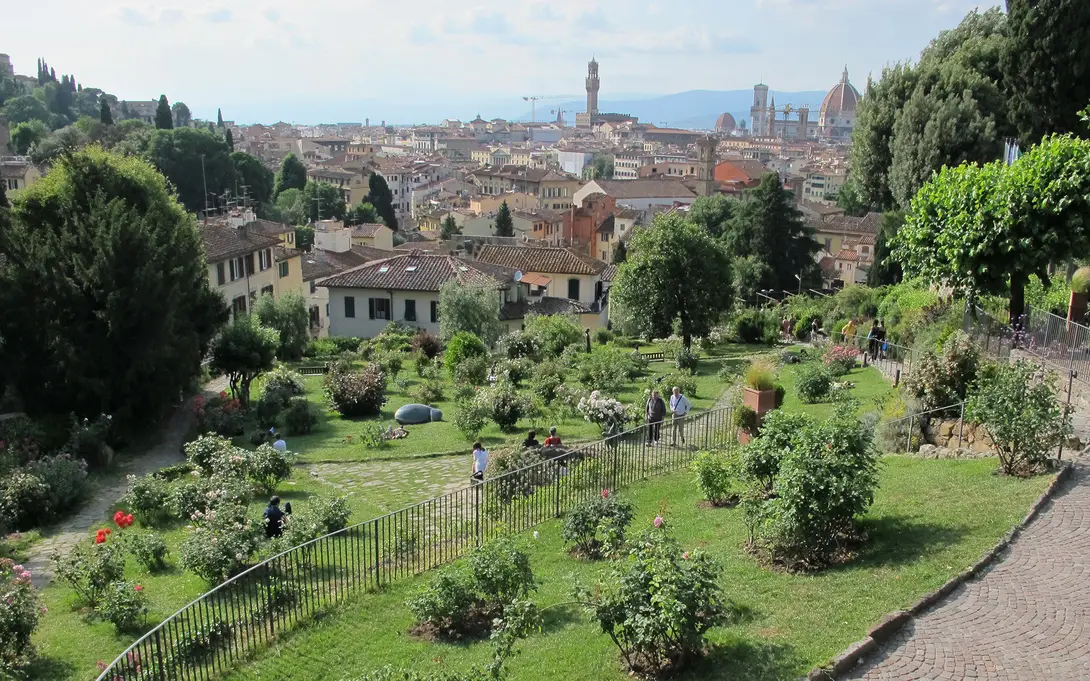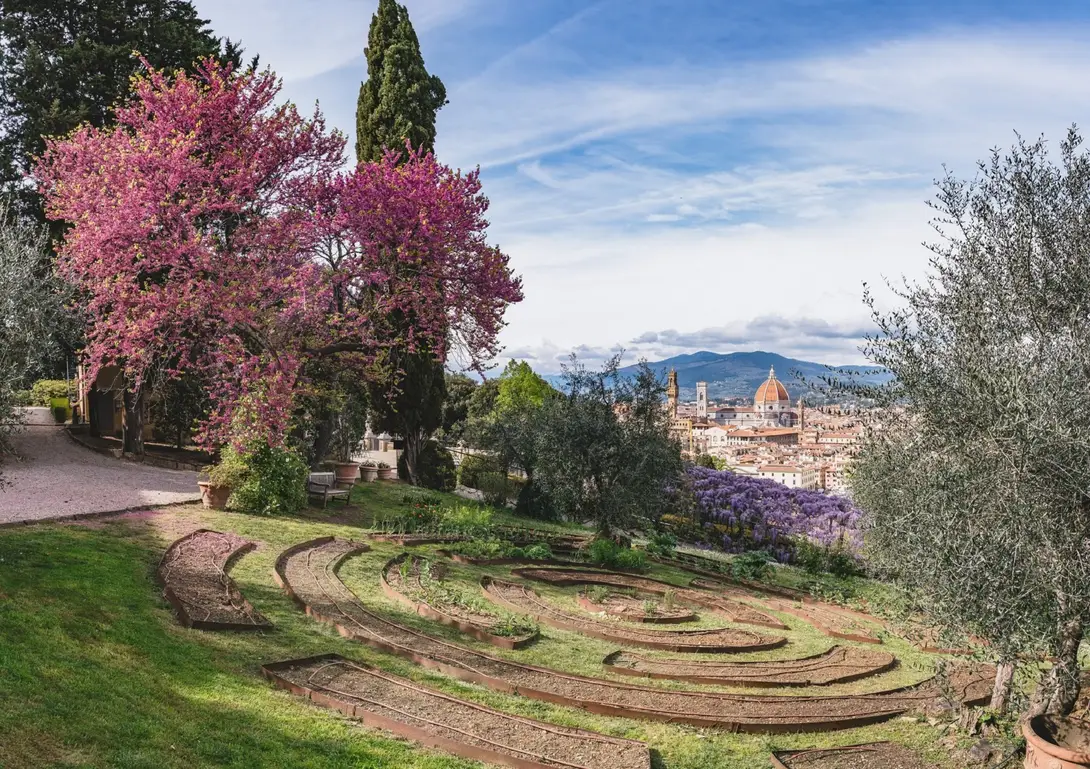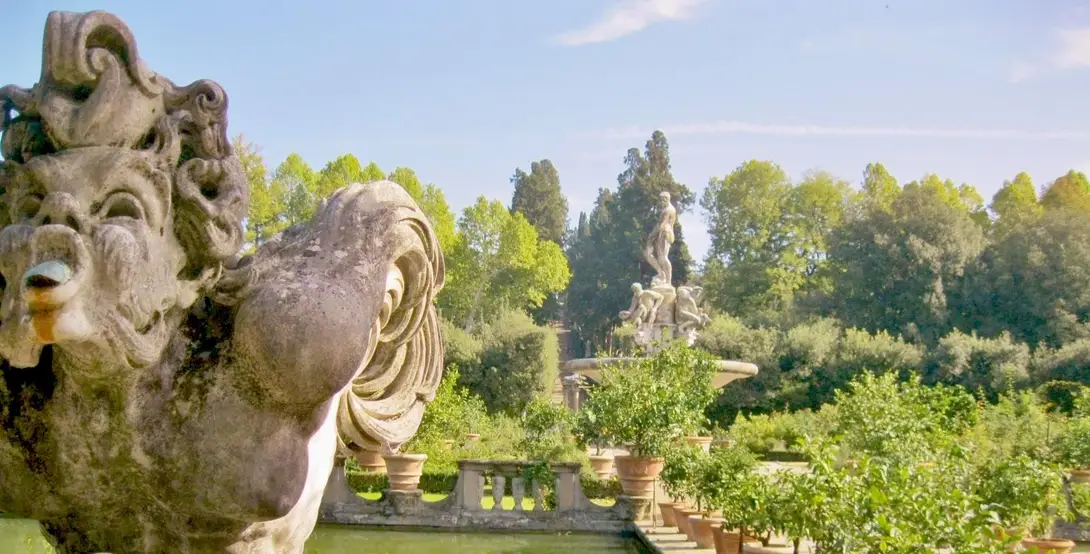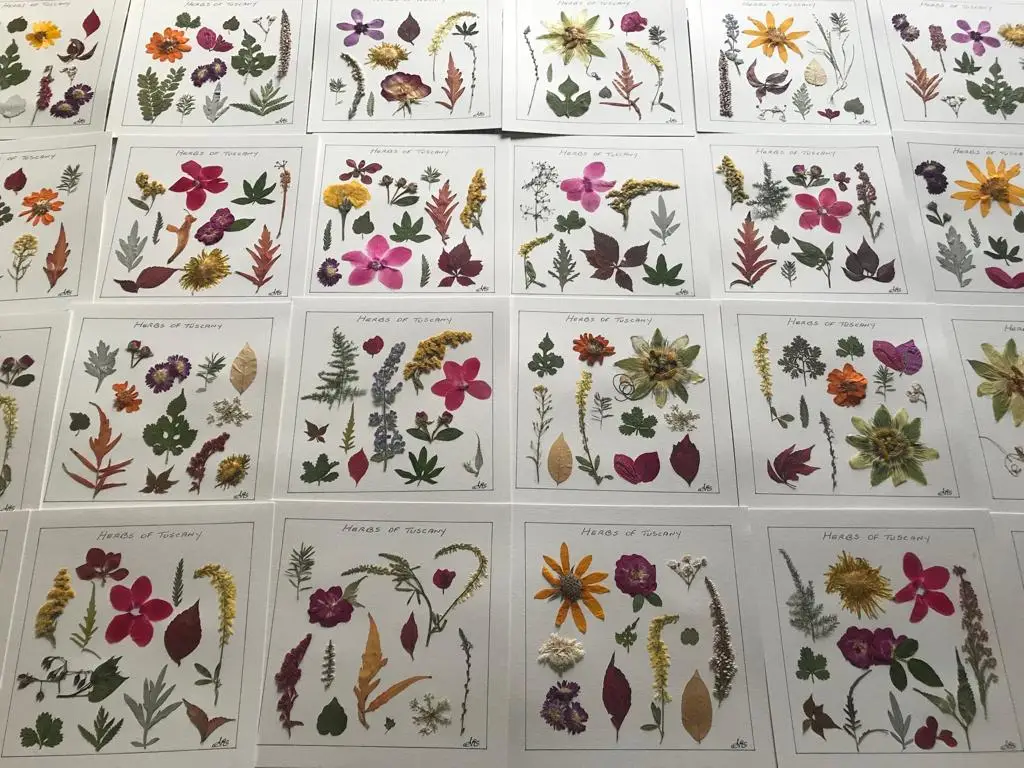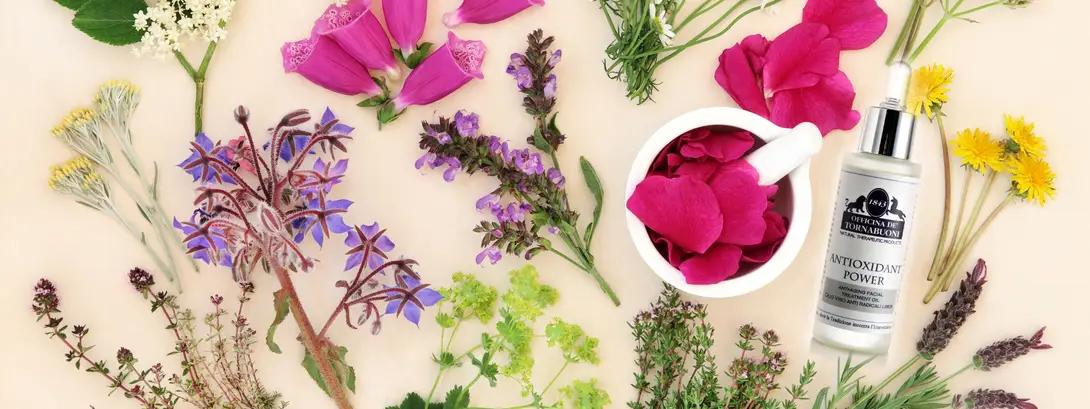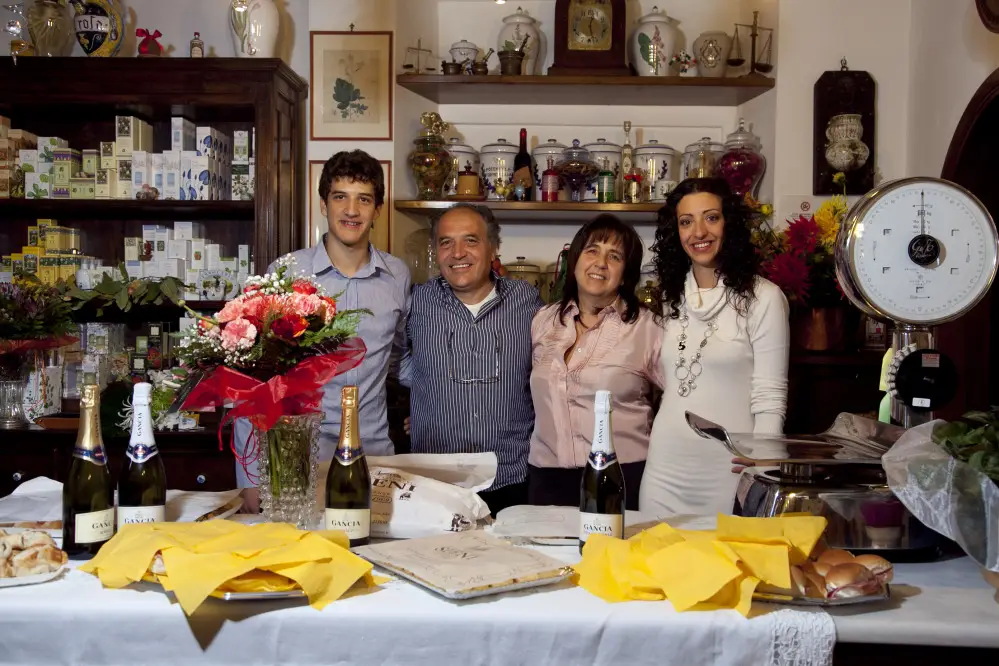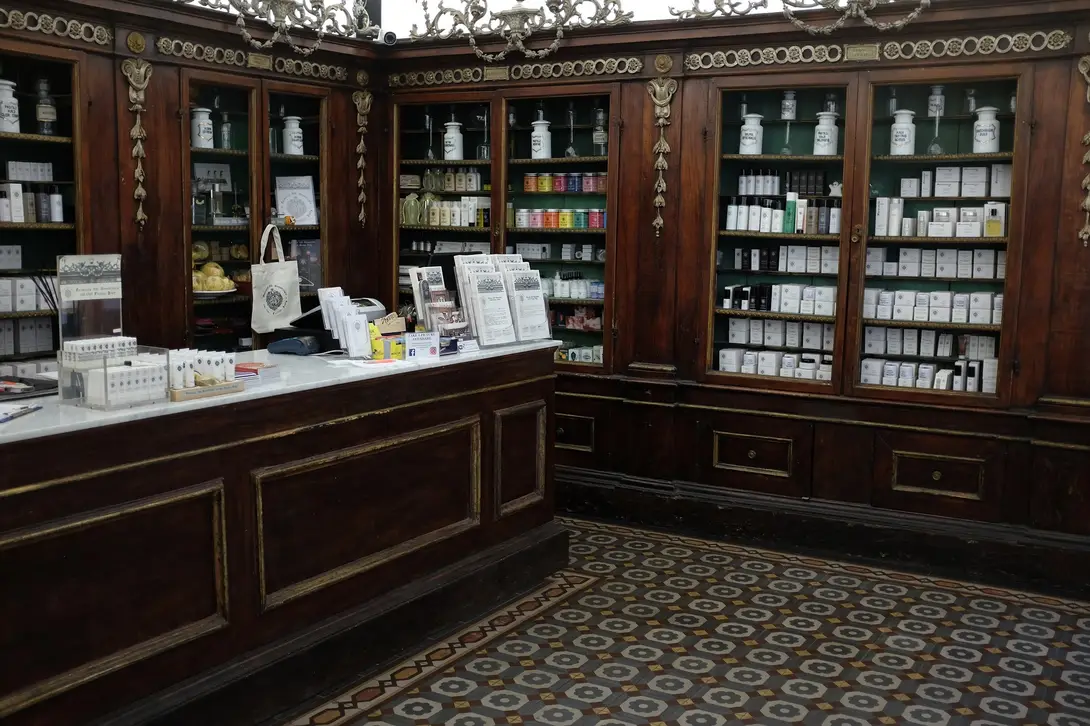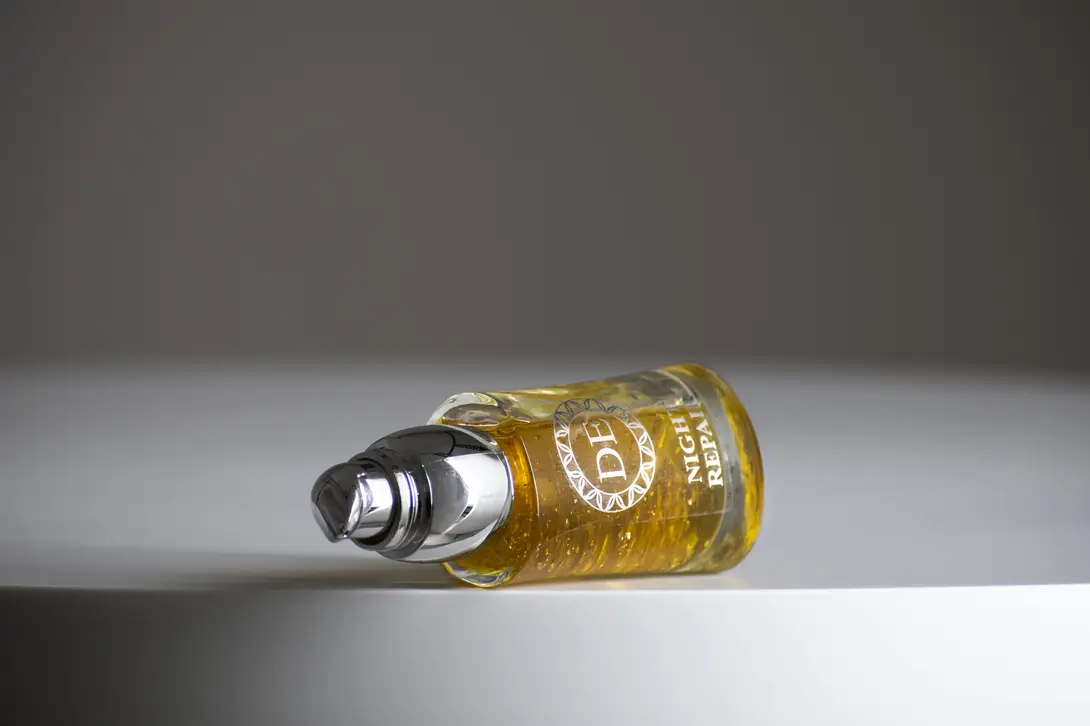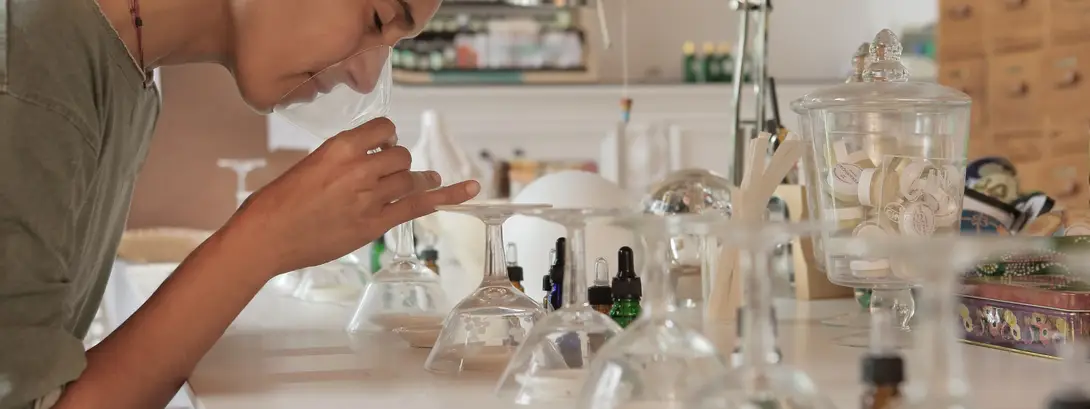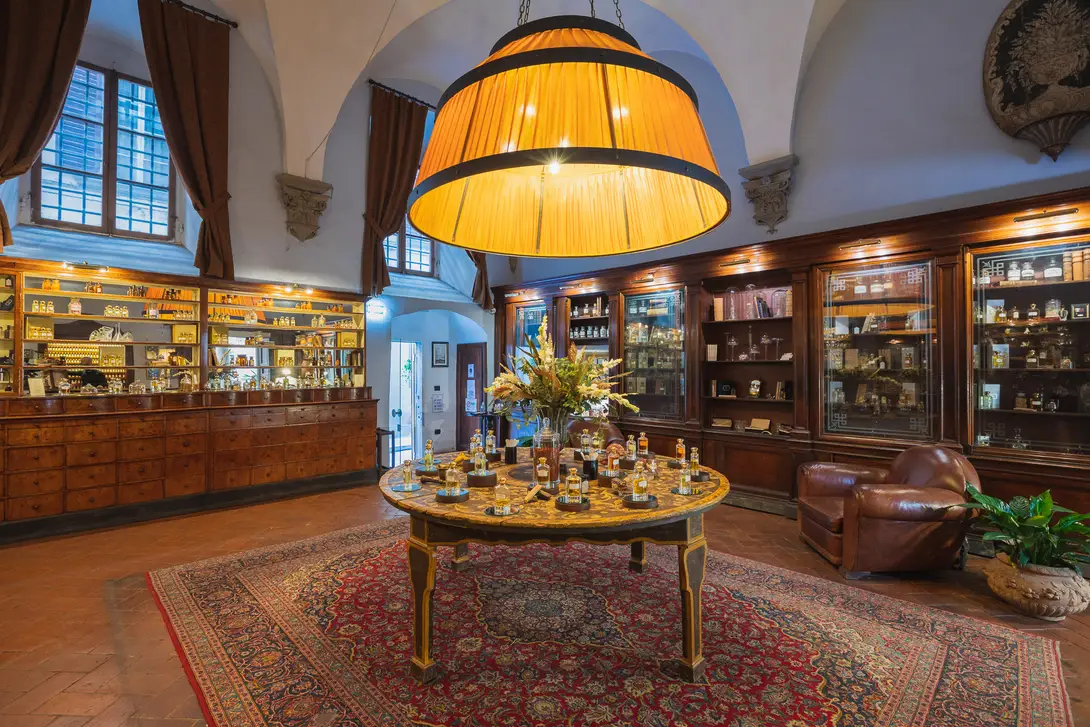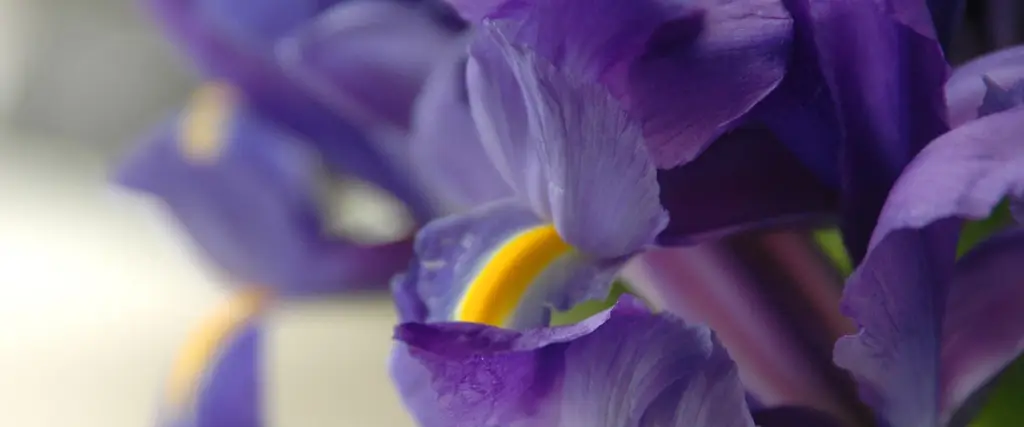
The flowers of Florence
Caterina dei Medici , bride of Henry II King of France, was a woman who loved luxury and refinement, and at the French court she made it customary to use perfume for the person and for rooms, a practice that was already in use in Florence by both the court and the city nobility.
Renato Bianco, whom the French renamed René le Florentin, her trusted master perfumer, designed for her the marvelous fragrant pomegranates, sphere-shaped jewelry creations containing solid perfumes, to be worn around the neck, on the belt or used as room diffusers. Soon the use of these scented boules spread throughout Italy and abroad. The inventiveness and technical skills of Renato Bianco were picked up by the French, who became masters in the art of perfumery.
Testifying to the centuries-long importance of the Art of the Medicians and the Apothecaries in the economic and cultural fabric of the city, Florence has dedicated to this guild one of the streets in the historic center where, since the Middle Ages, numerous warehouses had stood to supply the apothecaries with their preparations.
Via degli Speziali is located on the ancient Roman decumanus of Florentia and overlooks the site where the Mercato Vecchio, today's Piazza della Repubblica, once stood. Perfumes, essences, aromatic oils and beauty treatments were all part of the preparations of the Speziale, who, using medicinal and aromatic herbs and flowers, put into practice the expertise and experience handed down from generation to generation.
The ancient Florentine tradition continues to be alive and transmitted to this day with the flourishing of activities that operate, using research and innovation, in the perfumery and cosmetics sector.
In today's world, body care takes on central importance in the affirmation of personality and at the same time gives those who practice it well-being and psycho-physical relaxation. Perfumery and cosmetics have, since the early 1900s, been increasingly popular, to the point of conquering an ever-widening public.
Today, alongside the big brands, there are highly prestigious artisan perfumeries that offer customers customized and, in any case, high quality products created with innovative technologies and according to the principles of natural cosmetics. Professionalism, imagination, careful selection of raw materials and production technologies are the distinctive factors that make the product unique, capable of conveying pleasant sensations and well-being.
A 'perfumed' visit is to the Rose Garden, below Piazzale Michelangelo, where many varieties of roses, including ancient ones, are cultivated and from which you can admire unique views of the city.
The Medici family was responsible for the design of the Boboli Gardens an Italian garden of rare architectural and landscape elegance, for the design of which artists such as Vasari, Ammannati and Buontalenti were employed. Near the Boboli Garden, using the exit at Forte Belvedere, it is possible to visit the Villa Bardini Garden. A careful restoration, which lasted five years, offers visitors an itinerary that shows the development and transformation of the garden over time and a unique view of the historic centre of Florence.
A visit to the Botanical Garden, the Orto dei Semplici, also created by the de' Medici family in 1545 as a garden of officinal plants, known as semplici, can reveal to enthusiasts the centrality of the sector in Florence.
The Iris Garden, below Piazzale Michelangelo, is another place to visit; it was created in 1954 to host an annual international competition for the best varieties of irises, the flower of Florence.
This itinerary is part of the European project Crafts Code.
Artex
Les lieux
Étapes
Iris garden
Since 1251 the is the symbol of Florence: ever since 1954 this garden has been keeping and showing the most beautiful varieties of this flower and has 2.500 species. 2.5 hectares partly with olive trees, with a breath-taking view of the city. Every year in May, during the blossoming, the international exhibition-competition of the iris takes place in this garden.
The Italian Iris Society organizes guided visits and workshops for children and school groups.
The Garden is currently not accessible to strollers and to people in wheelchairs.
Rose Garden
The Rose garden is a green terrace right below Piazzale Michelangelo overlooking the historic centre of the city and enjoying a breath-taking view equal in beauty to that from Forte Belvedere. The Garden has been entirely redesigned better to display the works by Folon. Visitors will be able to admire the unique view of Santa Maria del Fiore and Palazzo Vecchio through the big suitcase of Partir; they will rest next to Folon’s man on the timeless bench of Je me souviens; they will stroke the Chat, the large cat sleeping on the grass among rosebushes.
In the garden there is also a ... corner of Japan! The Japanese garden was donated to the Municipality of Florence by the twin city of Kyoto.
Bardini Garden
The garden is an amalgamation of three different properties that are still clearly discernible: the large central Baroque staircase leading to the Belvedere (from here one of the best panoramas of Florence skyline); the English-style wood and the agricultural section next to the medieval city walls. The properties were reunited only in the 19th century, and following a period of neglect the garden and Villa Manadora were purchased by the antiquarian Stefano Bardini, who restored the complex and embellished the garden with decorative features in the eclectic taste of the late 19th century.
The garden s dominated by the Bardini Villa.
Boboli Gardens
The Medici family was the first to take care of the Boboli garden’s arrangement, creating the model of the Italian-style garden, then an example for many European courts, in which a rational order is given to the vegetation and the geometries of the avenues and plants are embellished with grottoes, statues and fountains.
Opened to the public in 1766, it is a real open-air museum: valuable are the Roman statues and those of Renaissance sculptors such as Baccio Bandinelli and Giambologna; the amphitheatre, where court performances took place; the Grotta del Buontalenti, where Michelangelo's Prisons were placed (now replaced by copies).
Habitat
A habitat is an ecosystem consisting mainly of plants, soil and water, carefully constructed and enclosed within a glass container.
You may have heard of them as biospheres or terraria. In any case, it requires very little maintenance and provides for its own sustenance.
In the workshop in Florence, small bottled forests are made every day, perfect for bringing a bit of wild nature into the home or office!
Ars Oshibana
ARS OSHIBANA is the brainchild of Angela Raveggi, who has been producing artistic compositions on paper and canvas with dried and pressed flowers since 1997.
In addition to paintings and décor panels, the product range includes greeting cards, bookmarks, notebooks and complete supplies for ceremonies, including a bouquet pressing service.
Officina De’ Tornabuoni
The history of Officina de' Tornabuoni began in the historical area of Florence, in the Anglo-American pharmacy founded by Henry Roberts in 1843.
De' Tornabuoni's workshop philosophy of wellbeing blends with profound technical and scientific knowledge, inherited from the ancient Florentine officinal tradition and expanded through cutting-edge research into beauty care and body health. In the ancient apothecary's shop one can discover cosmetics, perfumes, herbal teas...
Erboristeria Gremoni dal 1716
Gremoni Herbalist's shop since 1716. An ancient herbalist shop that has been consolidated and preserved over the centuries through family management handed down from 1700 to the present day.
Erboristeria Gremoni's strength is herbal teas, the result of its own knowledge and formulas acquired over the centuries, officinal herbs, both domestic and foreign, and their derivatives: tablets, extracts, tinctures, essential oils and much more.
Farmacia SS. Annunziata
In 1561, the apothecary Domenico di Vincenzo Brunetti, a member of the Physicians and Pharmacists Guild, moved his shop to these premises, which had previously housed another “spezieria”, managed by the Benedictine Sisters of San Niccolò.
The SS. Annunziata pharmacy was specialized in galenic formulations and remedies for skin care and beauty.
The 17th-century furnishings of the sales area consist of three display cases made of dark wood with gold decorations. The counter has been severely damaged during the flood of 1966.
The pharmaceutical equipment, mainly dating from the 19th century, includes twelve jars from the Ginori manufactory. Although ancient tradition is still preserved, today the pharmacy owners work with modern technologies and new ingredients for preparations.
Museo di Storia Naturale dell'Università di Firenze - Botanical Garden, Giardino dei Semplici
The Botanical Garden, called also “Giardino dei Semplici”, created by the Medicis as a garden for medicinal plants (the “Simples”) in 1545, are among the oldest Gardens in the world. Between the 16th and 17th centuries, it enjoyed a period of great splendour. It covers an area of over two hectares, indoors and outdoors.
In its warm and cold greenhouses, built in the nineteenth century and the largest in Italy, are placed tropical and subtropical plants including the collections of Cicadae, of particular interest, Ficus, Palms, an ancient collection of citruses, succulent and aquatic plants, in addition to a rich collection of plants for traditional ethnobotanical uses.
Outdoors we find the vast collection of edible plants, the flowerbeds of medicinal and poisonous plants, the Zen garden and two acclimatization beds for exotic palms and Cicadae, hydrangeas in numerous varieties, the historical collection of azaleas, the pools with aquatic plants, among which there are species worthy of conservation, in addition to the lotus flowers and water lilies. Three display cases contain a small collection of carnivorous plants.
In the Garden, there are more than 200 trees, among which the magnificent 5 monumental trees, including the yew, planted in 1720 - the oldest specimen in the garden - and the cork oak of 1805.
Divina essentia
When luxury becomes natural, organic and safe. Divina Essentia specialises in aromatherapy cosmetics and natural dermocosmetics. All products are bottled one by one at the laboratory at the foot of the mountains, specialising in natural and organic cosmetics.
The formulations of Dr Barbara Burroni, a biologist and expert in natural medicine, contain only raw materials of the highest quality.
Arômantique
Arômantique is a small workshop in the heart of Florence. Like all magical places, it is hidden and must be sought out; you enter through a doorway like so many others and, after a corridor like so many others, you return to the open air, to a surprising aromatic garden: a perfumed journey that takes us back to childhood, to the re-discovery of the things that make us feel good. Harmony and happiness are within us, they just need to be reawakened.
Discovering natural perfumes is an immense gift. Listening to an essence is pure magic, which rips away all our burdens of knowledge to bring us back pure, as if we were just born, in front of a universal work of art, without codes.
Aquaflor
Aquaflor Firenze is an exclusive Perfumery House a stone's throw from Santa Croce. The prestigious Renaissance palace Corsini Antinori Serristori houses the atelier, the laboratory and the olfactory with its over 1500 precious essences from every corner of the world.
Aquaflor is dedicated to the art of artistic perfumery using artisanal techniques, inspired by the ancient Florentine tradition.
Each fragrance is made in the Florentine laboratory using raw materials of the highest quality.

